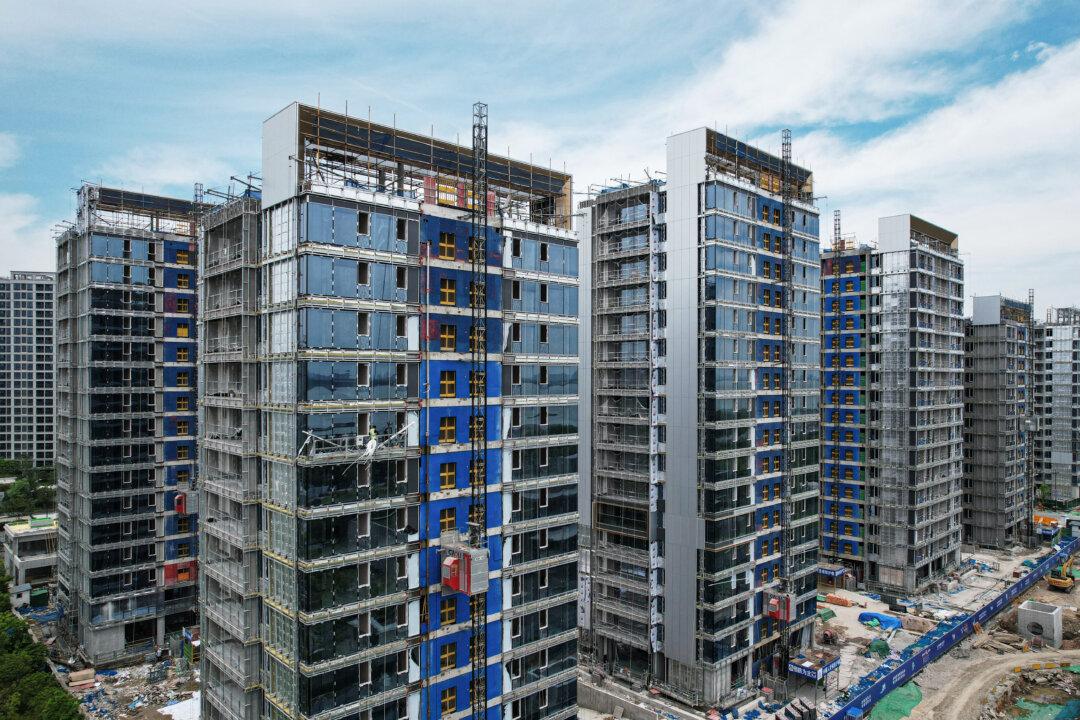Beijing’s most ambitious plan yet to rescue its struggling property sector could be the development investors have been anticipating for months. But the bold steps could pose risks to banks operating in smaller cities, said S&P Global in a report on Monday.
The global ratings agency expects the recent measures, such as lowering down-payment requirements and removing the floor on mortgage rates, could temporarily boost property demand. However, the measure also introduce risks related to leverage, mortgage defaults, and potential challenges for banks in smaller cities.
“Recent measures to fix China’s property slump [such as] a relaxation of down-payment requirements will temporarily increase demand for mortgages. That could stress some banks if housing prices continue to fall,” S&P wrote in the report.
For first-time homebuyers, the People’s Bank of China (PBC), the nation’s central bank, lowered the down-payment requirement from 20 percent to 15 percent on May 17.
The PBC simultaneously announced the creation of a 300 billion yuan ($41.43 billion) fund as part of a re-lending program for affordable housing and lifted a lower ceiling on mortgage rates, allowing banks to reduce interest costs.
Following the announcement, Tao Ling, the PBC’s deputy governor, reportedly said that the re-lending scheme might eventually support 500 billion yuan ($69 billion) in bank loans to encourage home buying.
Prices Are Plummeting
The ratings agency argues that housing prices in smaller cities are likely to fall by around 14 percent between 2024 and 2025. Given that first-time homeowners only need to make a 15 percent down payment, a further decline in prices in the third year of ownership could force them into negative equity. That may cause some owners with several “first homes” to walk away from their properties and default.“Banks would then be left holding onto houses that are worth less than the mortgage loans,” S&P wrote. “The removal of the floor on mortgage rates will also give lenders less buffer to absorb potential losses when defaults do happen.” Banks would have to incur additional costs to pursue defaulters’ other assets to mitigate the losses in such cases.”
According to S&P, the definition of “first homes” is quite “lose.” When buying a home in a new location, buyers with properties in another city can still qualify as first-time buyers. Some of these buyers may not live in their newly purchased homes and may quit paying for them if they fall into negative equity.
“First-time homebuyers typically live in their homes and are therefore less likely to give up their residence, even if the value of their homes is under water,” the agency noted.
This will also challenge banks’ risk management, S&P added. Hence, lenders will face the tough challenge of accurately identifying primary residence buyers while increasing down payments and mortgage rates for others.
Goldman Sachs, S&P’s peer, is concerned too about household behavior, which may differ significantly from previous housing downturns. This could impact the effectiveness of the latest property easing measures, the New York-based investment bank said.
According to Goldman Sachs, during the last major housing downturn in 2014–15, China had about 330 million people aged 20–34 and 18 million annual births. Currently, the number of 20–to 34-year-olds has decreased to 270 million, and annual births have dropped to 10 million.
In addition, the investment bank said that life events like marriages and childbirths drive property demand, adhering to the principle that “housing is for living in, not for speculation.”
Right Price
Lifting up housing inventory well below market prices could burden banks, according to Goldman Sachs, if loans are collateralized by these properties, potentially necessitating government support for the banking system.On the other hand, overly high prices could make it difficult for financially strapped local governments to finance transactions. High bid prices could also significantly increase secondary market supply, according to the investment bank.
What Next?
Hence, the success of policies in reinvigorating demand and stabilizing prices will play a crucial role, says S&P. It adds that if the new measures prove effective, China’s property market may reach its bottom, including in tier-three and tier-four markets that have been slow to recover. This relies on improvements in homebuyer confidence, policy support, and government coordination.Yet, should home prices drop beyond the 15 percent threshold, causing negative equity for homeowners, those with multiple first homes would be more inclined to stop mortgage payments. This would especially apply if they lacked confidence in their income or job security.
“Overall,” concluded the ratings agency, “we believe a relaxation of down payment requirements will temporarily increase demand for mortgages. That could stress some banks if housing prices continue to fall.”







